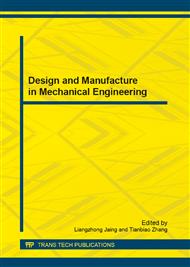p.173
p.179
p.185
p.189
p.196
p.202
p.210
p.215
p.221
Physical Invariant Constitutive Equation for Soft Tissues
Abstract:
Principal axis formulations are regularly used in isotropic elasticity but they are not often used in dealing with anisotropic problems. In this paper, based on a principal axis technique, we develop a physical invariant constitutive equation for incompressible transversely isotropic solids, where it contains only a one variable (general) function. The corresponding strain energy function depends on four invariants that have immediate physical interpretation. These invariants are useful in facilitating an experiment to obtain a specific constitutive equation for a particular type of materials. The explicit appearance of the classical ground state constants in the constitutive equation simplifies the calculation for their admissible values. A specific constitutive model is proposed for soft tissues and the model fits reasonably well with existing experimental data; it is also able to accurately predict experiment data.
Info:
Periodical:
Pages:
196-201
Citation:
Online since:
September 2013
Authors:
Price:
Сopyright:
© 2013 Trans Tech Publications Ltd. All Rights Reserved
Share:
Citation:


